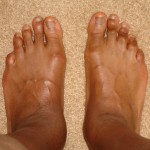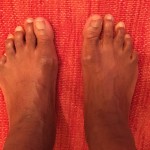Integra Therapy is very pleased to be taking part in this year’s Fourth International Fascia Research Congress in Washington D.C. I will be going to present new research in fascial dynamics which considers the ‘live’ aspect of fascia by examining how it may behave in the ‘living’ human subject, in other words in vivo. The majority of connective tissue research in the scientific realm largely concentrates its concerns with the detail of biology, biomechanics and physiology from an objective viewpoint. Aside from the work of Jean-Claude Guimberteau [1] these studies although useful, are limited in that they rarely capture fascial dynamics in live human subjects. It is well known in the biological sciences that what occurs in vitro does not necessarily translate to how results behave in vivo within living biological examples. In many instances science makes a great leap of faith to extrapolate those findings to living subjects. The question remains how does fascia behave in vivo in the living subject?
Additionally, investigating living tissue and in particular fascial dynamics in humans is problematic not only due to ethical considerations, but in essence fascia ‘is’ our physical body in its totality. It is our bodies which we inhabit that enables us to perceive and be and think in the world. Therefore our fasica is part of our experience both ‘subjectively’ and ‘objectively’ if you will. And it is the lived experience or phenomenology of our experience in our bodies relating to fascia research, that I believe is in need of redress.
This is the thrust of the research that I have undertaken on myself as a self-study over 13 years. It describes a methodology I have called the Integra Method which allows an individual to develop a heightened somatic awareness of their body/fascial system that may describe a perpetual neurobiological response [2] so that the body is experienced as freeing itself of tension in real-time, all the time. These observations have lead me to understand that this ongoing change in the body is ‘autogenic’ (self-generating) and outside of volitional control. As a result of this process, there have been anatomical structural and functional changes that preferentially optimise function to my body which have been captured through photographic and video evidence (see example images of my feet below). In addition, the first-person narrative and heuristic aspects of the process were captured in a reflexive diary to explore how lived experience relates to an ongoing changes in the physical body. This forms part of a second phase to the research in which the data has yet to be processed.

 This research raises questions around – What more can we understand about the way the human body organises itself in relation to dysfuntion and health and what are the conditions for that if any? Does the body have an innate capacity to change its own structure without external traditional methods of training or practices? Does fascia behave autogenically and can that be sensed as a felt experience? How can a more relational way of looking at fascia with a first-person perspective benefit perceived wellbeing and health? Can this methodology provide insights into an individuals own structural and functional limitations to help provide them with their own solutions towards health?
This research raises questions around – What more can we understand about the way the human body organises itself in relation to dysfuntion and health and what are the conditions for that if any? Does the body have an innate capacity to change its own structure without external traditional methods of training or practices? Does fascia behave autogenically and can that be sensed as a felt experience? How can a more relational way of looking at fascia with a first-person perspective benefit perceived wellbeing and health? Can this methodology provide insights into an individuals own structural and functional limitations to help provide them with their own solutions towards health?
I have a lot of questions with not necessarily any definitive answers, but I do have an experience with this research approach that is compelling and I believe valuable. If this opens up a conversation in you the reader and those attending the conference who are interested in any aspect of this work, then do get InTouch with me as I’ll be very interested in your thoughts.
References
[1] Guimberteau, J. C. (2005) The sliding mechanics of subcutaneous structures in man Illustration of the functional unit: the microvacuoles. Studies of the Academie Nationale de Chirurgie, 4, 35-42.
[2] Schleip, R. (2003) Fascial Plasticity- A new neurobiological explanation: Part 1. Journal of Bodywork and Movement Therapies, 7. pp. 11-19.

Comment (1)